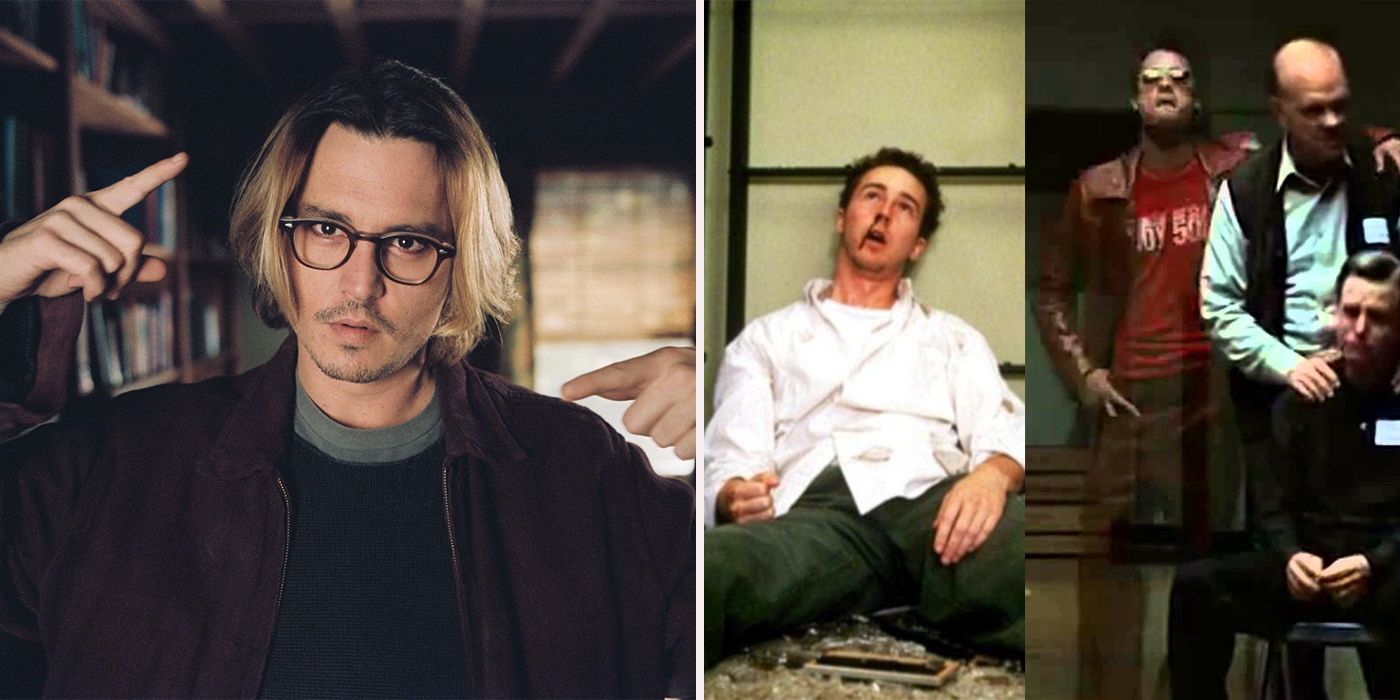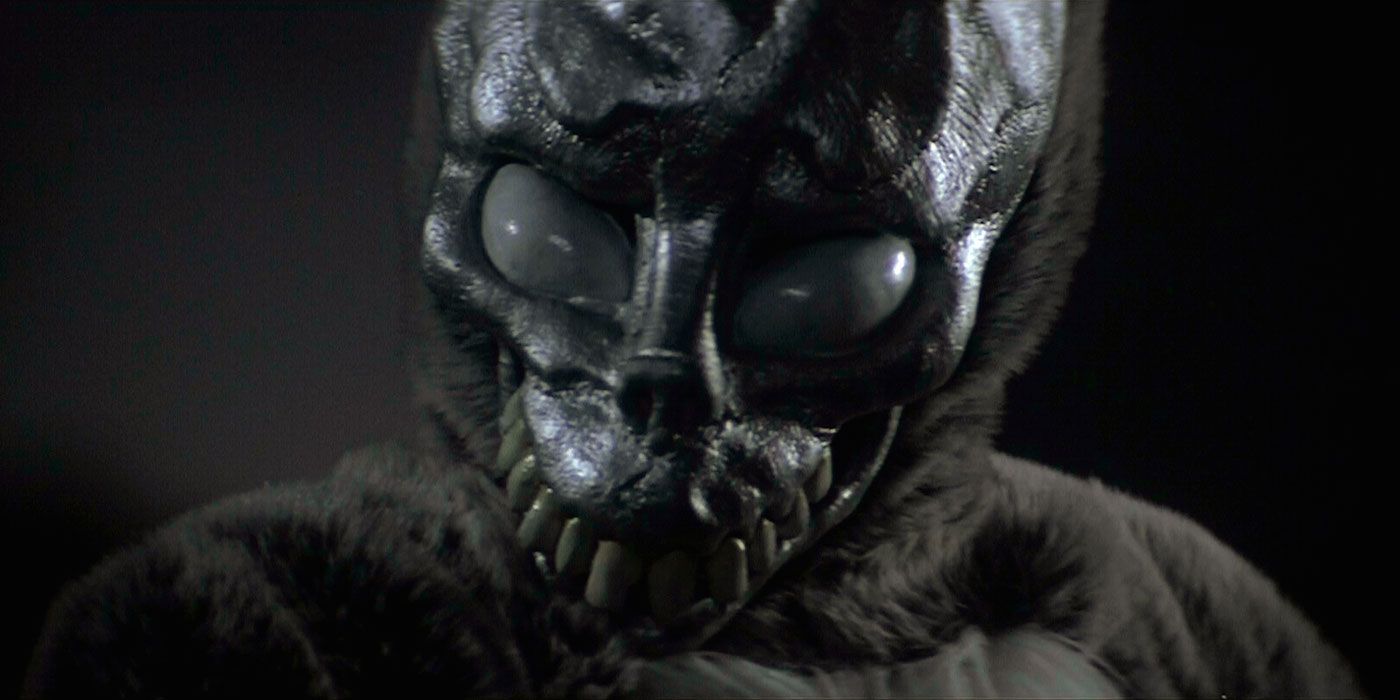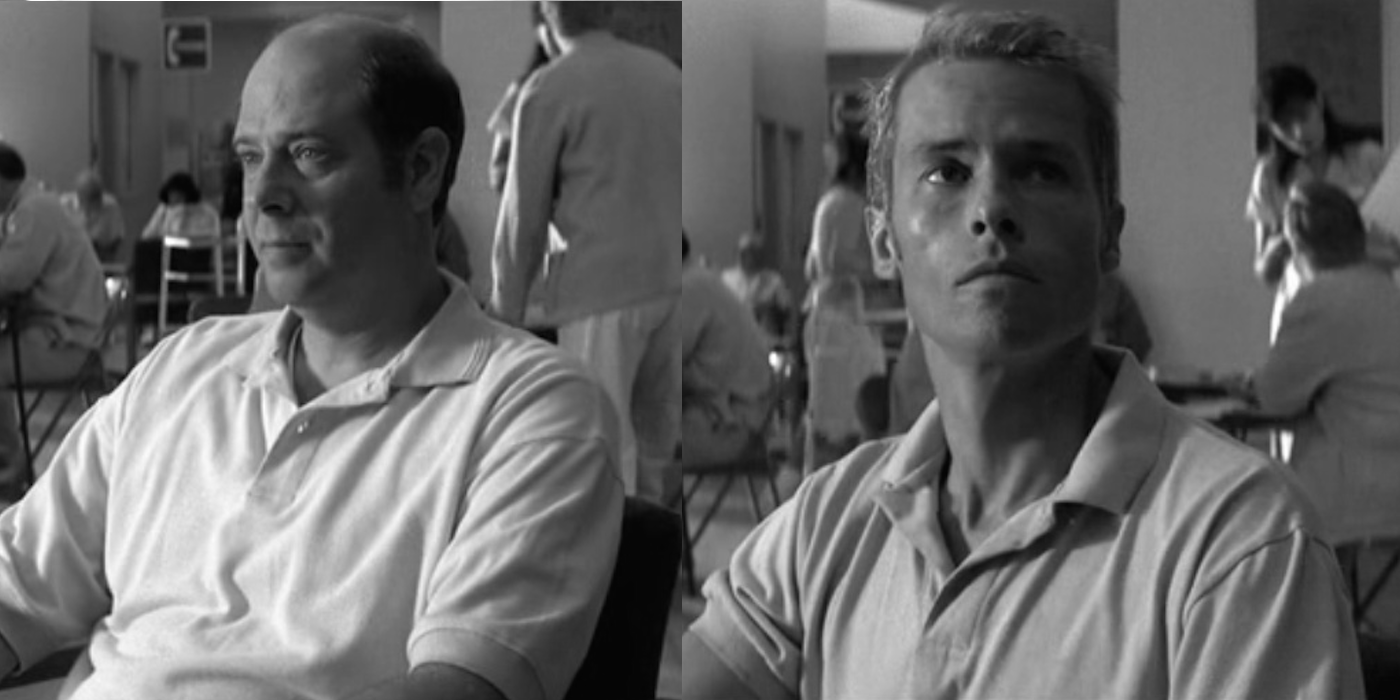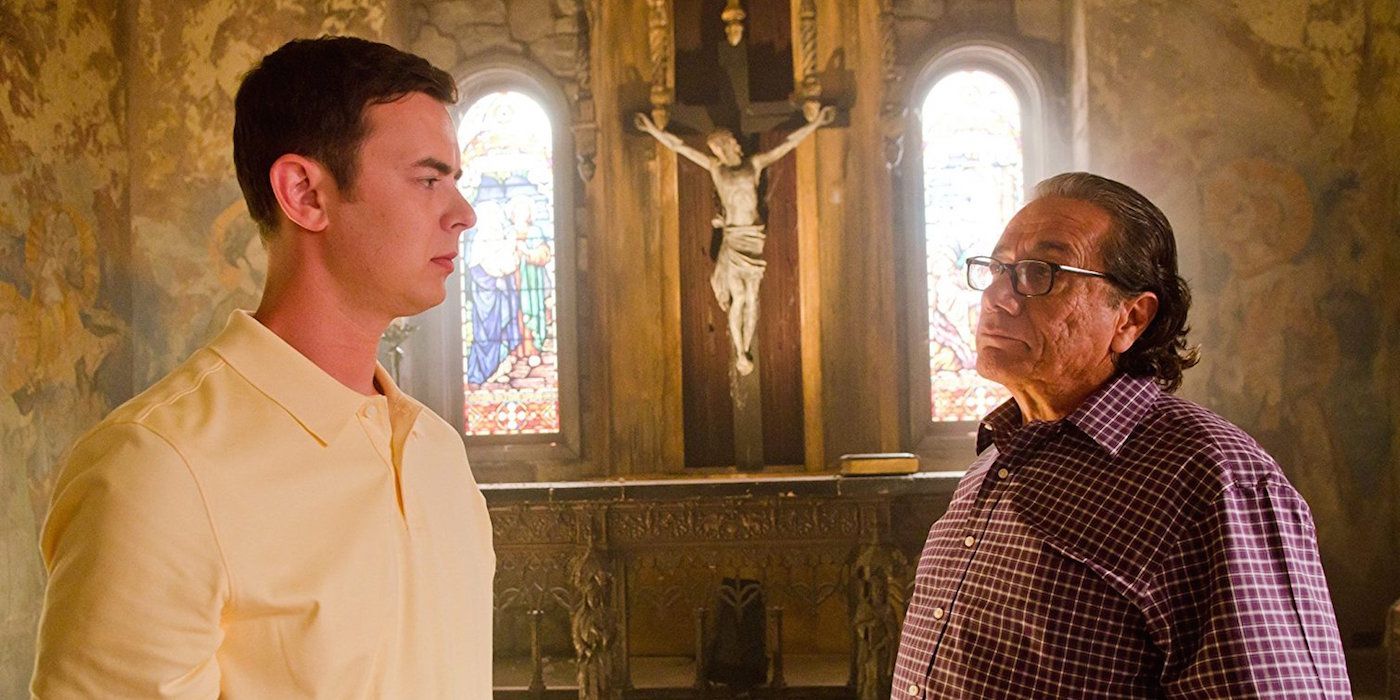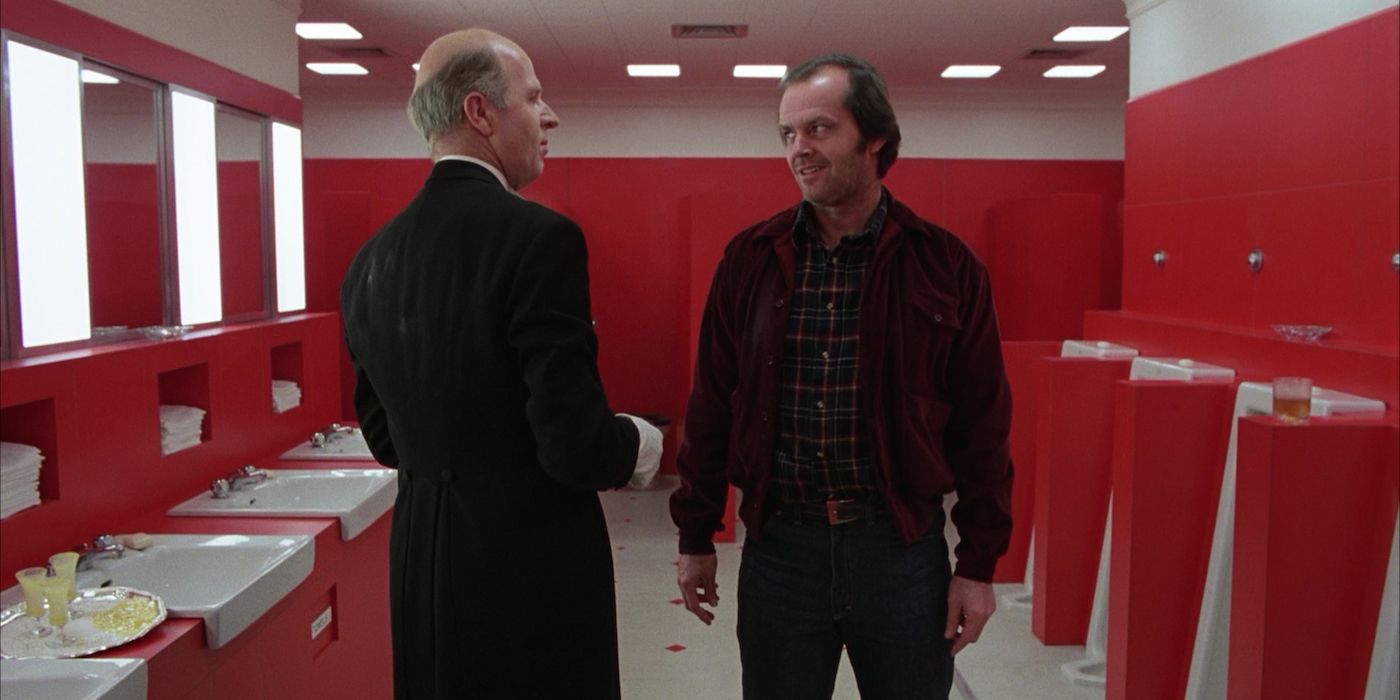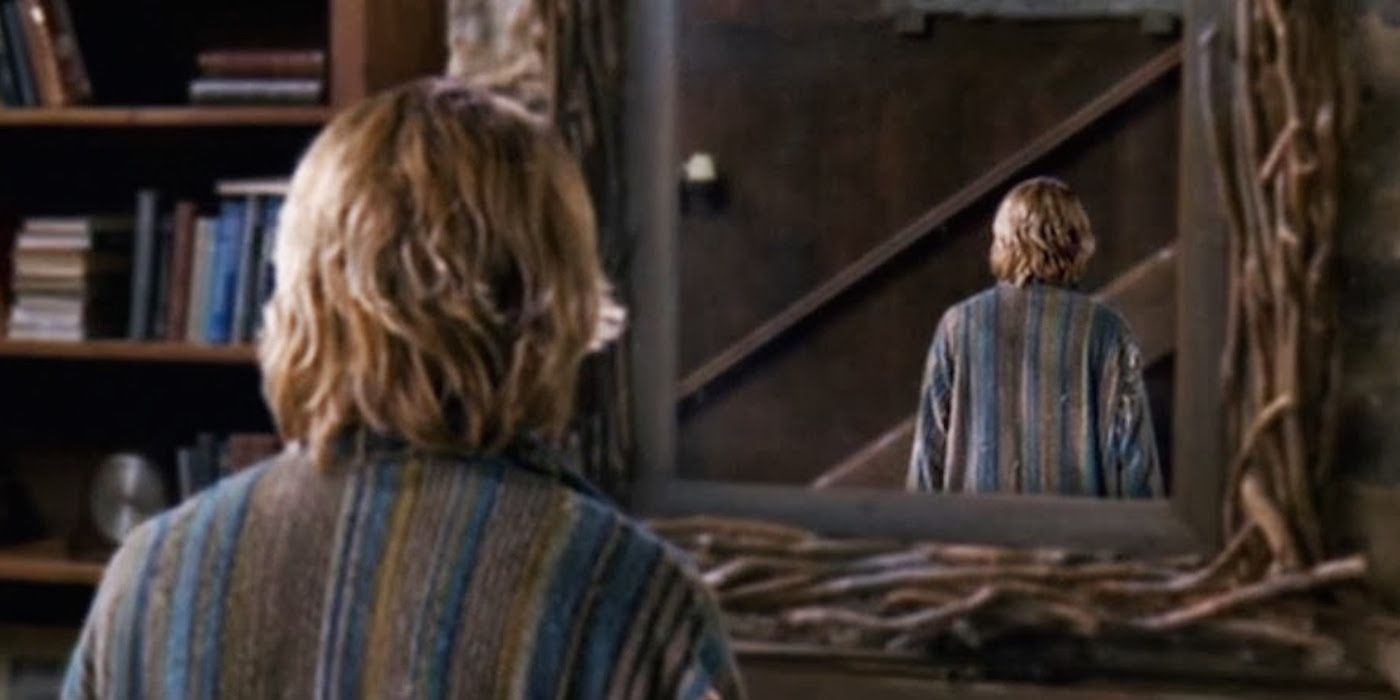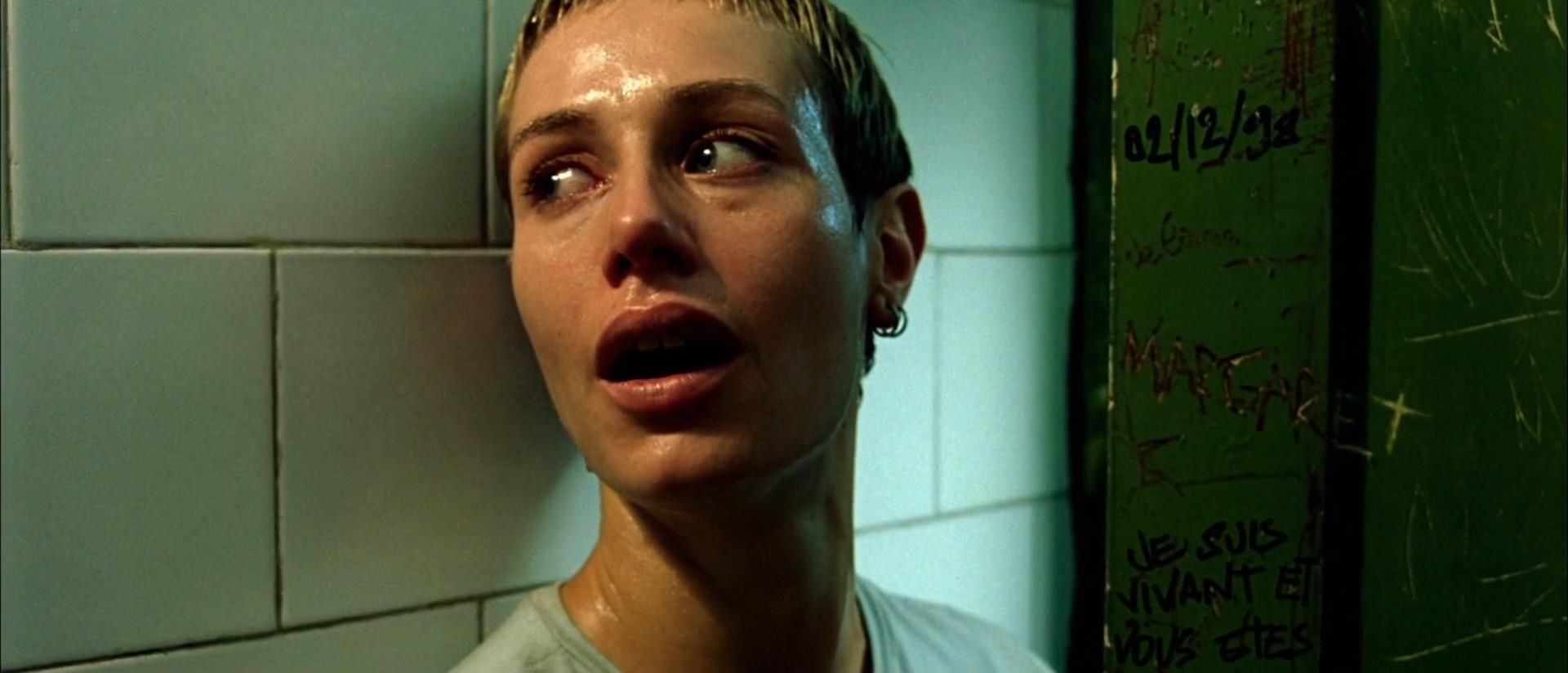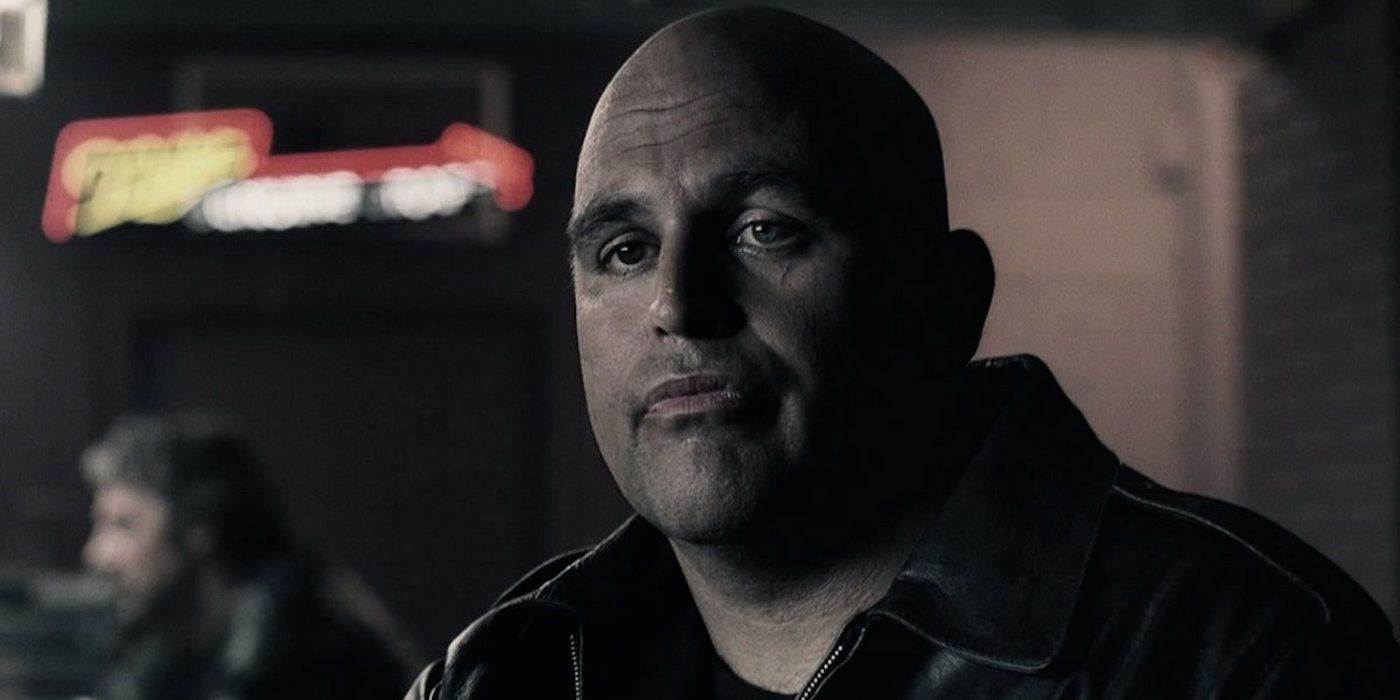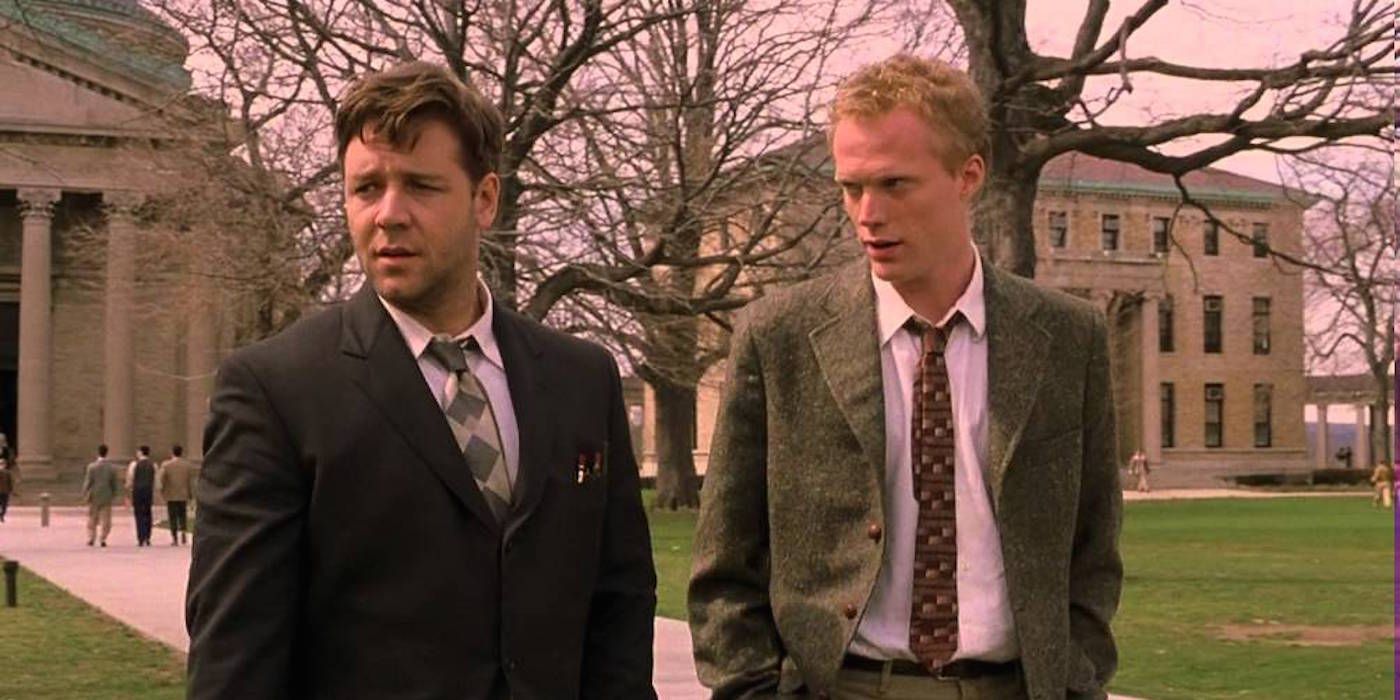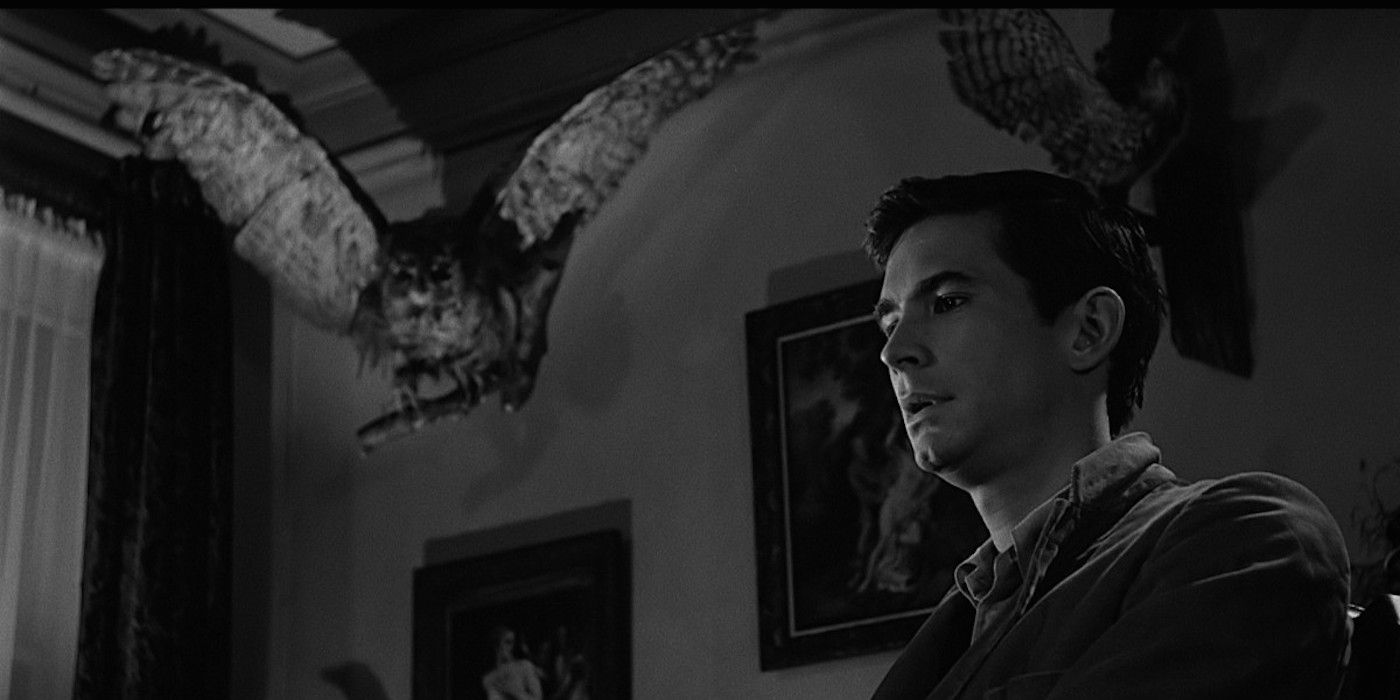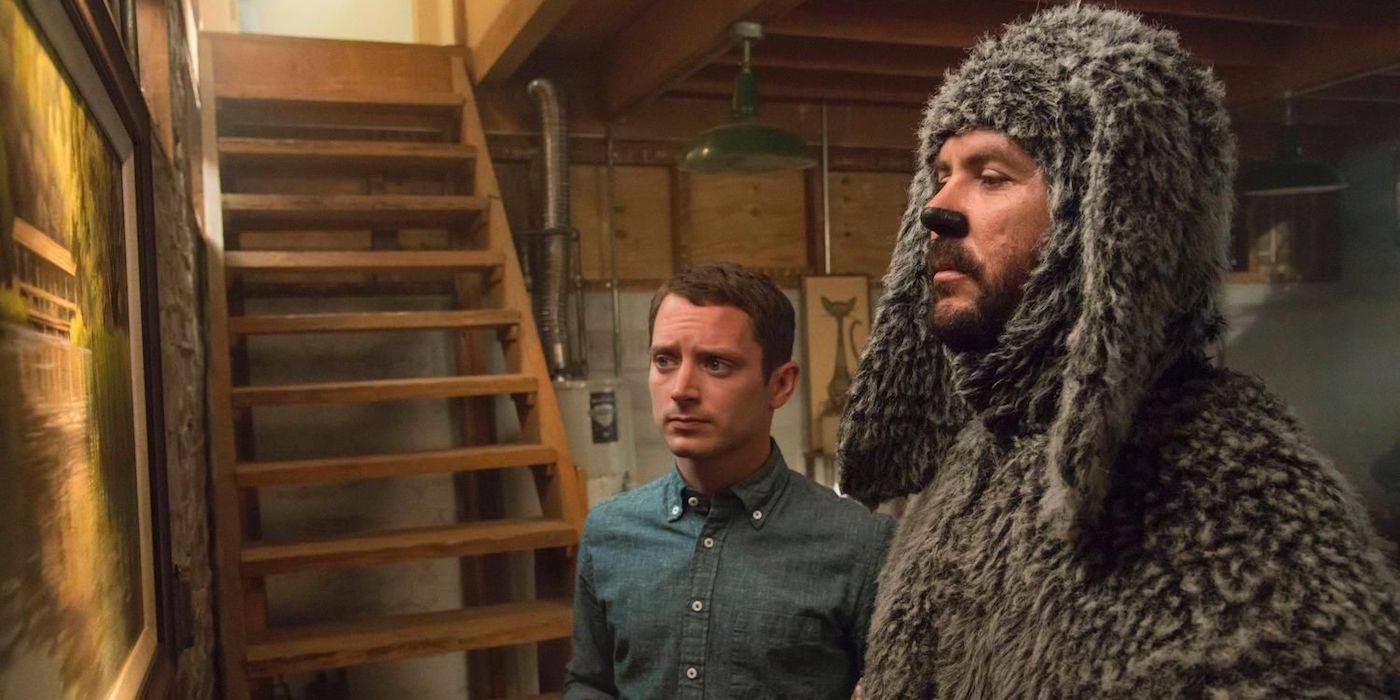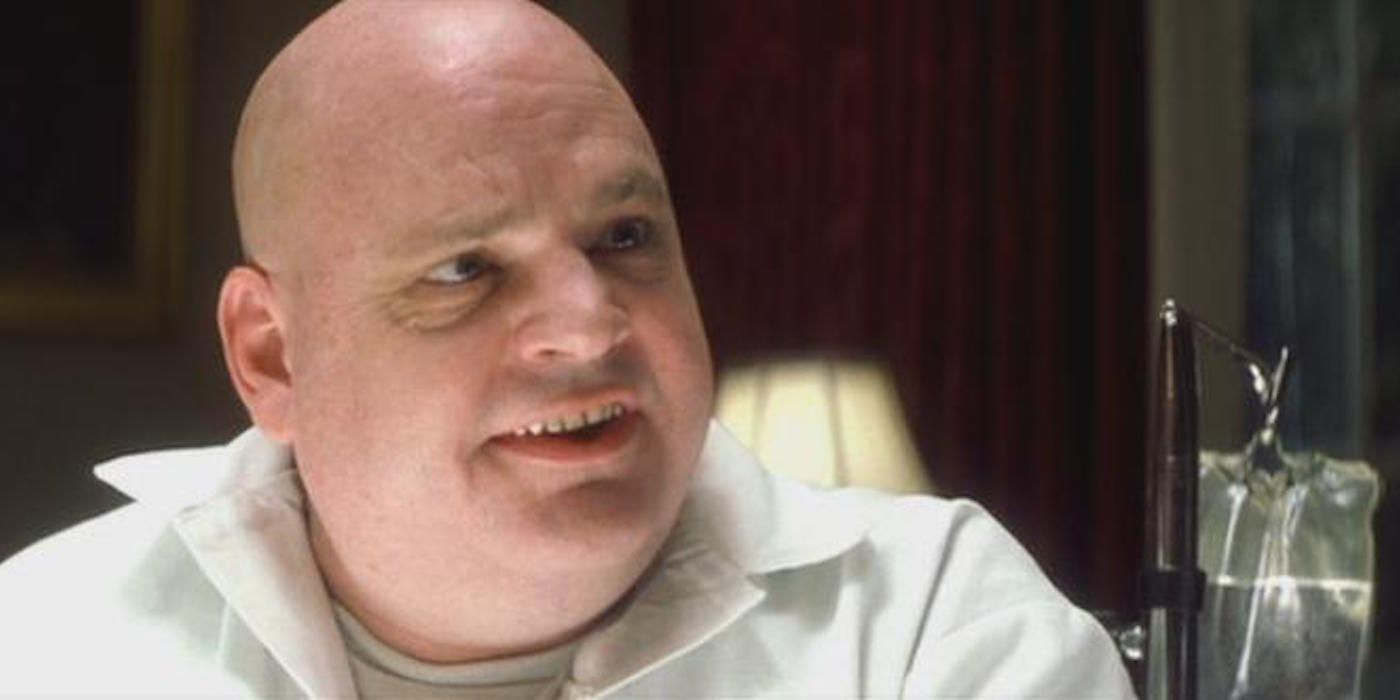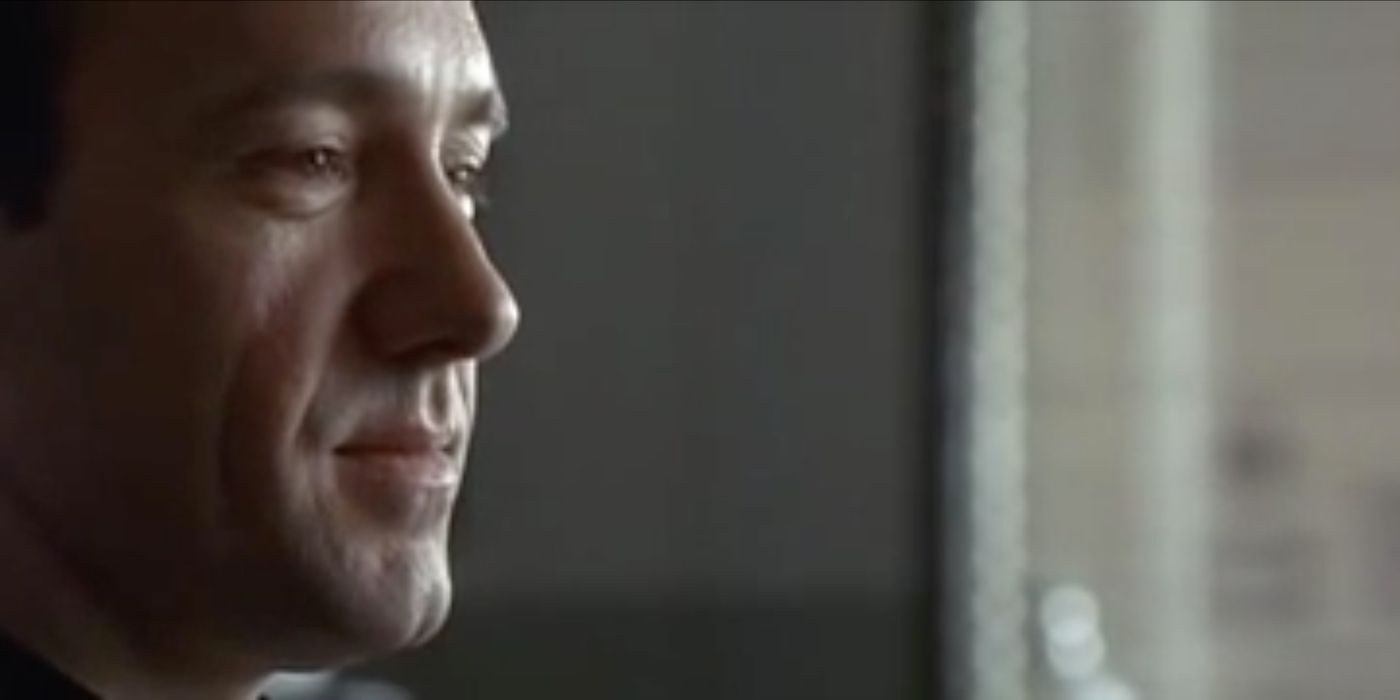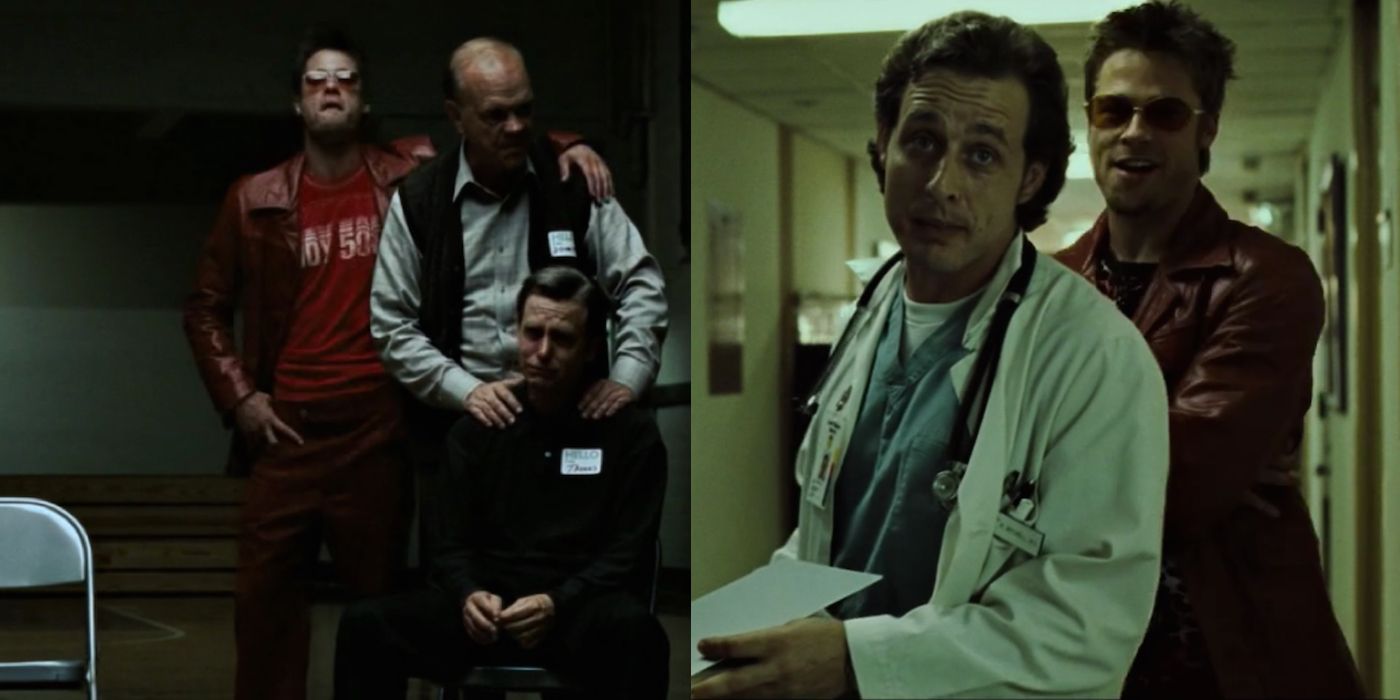It goes by many names: Schizophrenia, Multiple Personalities, or the more technically accurate Disassociative Identity Disorder. What it comes down to is that a pivotal character in a film or TV show was never really there. They helped the hero find their emotional strength or served as a scapegoat for the unspeakable acts the protagonist has committed, but in the end, they were nothing but a hallucination.
David Fincher’s classic film isn’t the only story that pulled a “Fight Club”. But even if the protagonist is revealed as mentally unstable straight off the bat, we can’t go around assuming that it’s always a Tyler Durden thing. That’s why it’s always impressive when a writer is able to pull it off, especially if they’ve peppered the story with subtle hints that only come to light on the second viewing. Sometimes things will stand out right away. Others clues require even more scrutiny and repeated viewings to notice. But it’s always thrilling when a great story is can keep you guessing and surprises you with the reveal that one of the main characters was never really there.
Let’s hear it for these 15 Amazingly Subtle Clues That Characters Were Imaginary All Along. Spoilers abound, naturally.
Donnie Darko – Frank
Donnie Darko is a possible schizophrenic and sleepwalker. One night, a tall guy in a skeletal rabbit costume who calls himself Frank lures Donnie out of his house in time to save him from getting crushed by an airplane engine that crashes into his room. Frank tells Donnie the world will end in 28 days unless he carries out a series of destructive tasks. But when Donnie tells his therapist he made a new friend, she asks “real or imaginary”, indicating that he has a history of seeing people that aren’t there.
Donnie’s actions also seem to be influenced by his school curriculum that includes Watership Down (a book about sentient rabbits in peril) and The Destructors by Graham Greene, about kids who destroy a house just as Donnie burns down the home of a motivational speaker revealed to be an abuser.
Mr. Robot – Mr. Robot
Astute viewers knew something was up with Mr. Robot before the reveal near the end of season 1. Not only are Mr. Robot and Elliot the same person, but Mr. Robot is a manifestation of Elliott’s deceased father.
If you go back and watch the preceding episodes, you notice that none of the other characters ever look at or address Mr. Robot, and they always behave as if Elliott is the one in charge, even though Elliott frequently defers to Mr. Robot.
If you think about all the things Mr. Robot does throughout the series, you realize that our soft-spoken protagonist is actually quite the wild card. Not only that, but Elliott gives a massive clue in his first voiceover: “It’s actually happening. I’m talking to an imaginary person.” Turns out, the audience isn’t his only imaginary friend.
Memento - Sammy Jankis
“Remember Sammy Jankis.” Leonard, the short-term memory challenged protagonist of Memento keeps that message tattooed on his hand (along with other reminder tattoos all over his body). But Sammy Jankis is a self-inflicted red herring.
Leonard plants false clues so that he can keep searching for his wife’s killer indefinitely instead of facing the truth – he’s the one responsible for her death. Whenever he gets to the painful end of his search, he burns the evidence and starts all over again.
Sammy’s story, about accidentally causing his wife’s insulin overdose, is really Leonard’s story. One telltale hint that’s easy to miss occurs when Sammy is waiting in the mental hospital. For one frame, Sammy becomes Leonard. Even if you notice it the first time, you might think it’s merely a symbolic way of connecting their stories instead of a clue that Leonard is the real Sammy.
Dexter - Professor Gellar
Dexter’s sixth season involves the hunt for the Doomsday Killers: Gellar - a religion professor - and his former student, Travis. They believe their ritualistic murders are part of God’s plan to usher in the apocalypse. But since the show’s main character is a serial killer who constantly confers with apparitions of his dead relatives, it makes sense that one of Dexter’s foes would have a similar affliction.
At first, we have no reason to take Gellar at anything other than face value as he walks Travis through their dastardly deeds. But before it’s revealed that Travis actually killed Gellar 3 years earlier, the writers drop hints that something’s amiss.
When Travis and Gellar go out in public together, people only acknowledge Travis. No one ever interacts with Gellar. Also, Gellar never kills or even touches any of the victims, as if he’s just taking a backseat/mentor role.
The Shining - Delbert Grady and Lloyd the Bartender
At first, the Overlook Hotel seems haunted as hell. There’s Corpse Lady and Bear Suit Guy in room 237, the twin girls who just want to play (with knives!), and the elevator of blood. But the ghosts with the most screen time are Lloyd the bartender, and Delbert Grady - who claims he’s the previous Overlook caretaker and wants to recruit Jack for the Murder Your Family Club.
It’s not the hotel that makes Jack a dull boy. Jack is combining his abusive tendencies with the story the manager told him about a murderous former caretaker named Charles Grady. What if all the messed up apparitions aren’t ghosts, but a manifestation of Jack’s psyche? He tells Delbert, “I saw your picture in the newspapers.” Jack could just be getting the details wrong.
Kubrick theories are their own list, but the biggest clue to support this one is that Jack never speaks to Grady or Lloyd without a mirror present.
Secret Window– John Shooter
Secret Window is another Stephen King story about an isolated writer who tries to write a book, with murderous results. Unfortunately, this film isn’t exactly Kubrick, but Johnny Depp does a good job of keeping the audience unaware that the conspicuously named angry man killing Mort’s friends and family as revenge for plagiarism is actually just Mort himself.
A nice, subtle clue occurs straight away, as the film’s first shot zooms into and then straight through the mirror into which Mort is staring. Later, when Mort’s wife arrives to serve divorce papers to her smelly pile of husband, the camera pulls out of the mirror and into reality. Suddenly, Mort’s place is in shambles and the perpetually pajama-clad writer somehow looks even worse than before.
The truth is revealed and Mort can’t blame the death of his ex-wife on anyone but himself.
High Tension – The Truck Driver
Many were disappointed by the twist in High Tension, Alexandre Aja’s otherwise riveting and brutal slasher film about a badass woman warding off a homicidal truck driver. Unfortunately, there is no truck driver. Marie is the real and only murderer.
At first, it seems like this ending has been tacked on as a cheap gimmick. Conjuring up a murderous proxy is one thing, but what about all that times she was alone with the killer?
Marie actually spoils the twist right at the start of the film when she relays to a friend a dream about running through the woods. Her friend asks who she was running from and Marie responds, “It was me… it was me running after me.” So when the killer gives himself literal head (with a severed head), it’s just a sweet little daydream Marie has while watching her ex-girlfriend sleep.
Sunshine - Pinbacker
Sunshine screenwriter Alex Garland and director Danny Boyle have opposing interpretations regarding the third act of this sci-fi epic about a team of astronauts tasked with reigniting the dying sun. Pinbacker, the captain of the Icarus I, did go insane and kill his crew. But did he survive to continue his murderous rampage on Icarus II?
Despite the massive tonal shift and plot hole it creates, Boyle says he did. But Garland says the killer isn’t Pinbacker, but Capa, the physicist who knows that - unless the crew population diminishes - there isn’t enough oxygen for anyone to complete the mission.
There are several things that favor Garland’s read including the fact that Pinbacker is never shown clearly, never kills when Capa interacts with crew, and no one ever sees Pinbacker other than Capa. The final confrontation takes place in a massive room where a wide shot reveals Capa and Cassie alone. Then suddenly, Pinbacker appears to kill her, allowing Capa to deliver the nukes and complete the mission.
The Machinist - Ivan
Christian Bale famously starved himself to play Trevor, the insomnia-plagued Machinist with a dark, repressed secret. Ivan is a large, bald man with a sinister grin who claims he’s filling in for Reynolds at the factory.
When Ivan distracts Trevor, it results in another co-worker losing an arm. No one at the factory admits to knowing Ivan, but Ivan suggests that they’re messing with Trevor as revenge for the accident. Trevor grows more paranoid when he finds a photo of Ivan and Reynolds. Trevor runs Ivan’s license plate and is perplexed when the number matches the car Trevor totaled the previous year. Later, Trevor’s girlfriend has the same picture of Ivan and Reynolds, but she insists that it’s Trevor in the photo, not Ivan.
Eventually, we learn Ivan is a manifestation of Trevor’s guilt over a hit and run he caused a year before that resulted in the death of a child.
6. A Beautiful Mind – Charles, Charles’ Niece, and Parcher
In A Beautiful Mind, brilliant mathematician John Nash sees a lot of imaginary people over the course of the film. His best friend, Charles, often appears and disappears whenever Nash needs someone to talk to. Charles’ niece somehow manages to charge a flock of pigeons without scaring them off.
But the biggest surprise involves Nash's employer; an FBI Agent named Parcher who tells Nash the government needs his code-breaking skills to thwart a Soviet attack. Their enemies, intent on keeping them from breaking the code, pursue Nash and Parcher. Only none of that happens.
We learn Parcher isn’t real when Nash has a public breakdown. Like Charles, Parcher often appears and disappears suddenly after a wide shot reveals there is no one else around. At one point, Nash is arguing with Parcher and then is interrupted by a colleague who asks who Nash is talking to.
Psycho (1960) – Mother Bates
In one of the earliest (and greatest) examples of this twist, Psycho reveals that Norman’s angry old mother isn’t the one ruining perfectly good shower curtains with her backwards morality - because she’s been dead for years.
Norman, the seemingly mild-mannered proprietor of the Bates Motel, hears his mother’s voice urging him to don her clothes and carry out her murderous desires. 1960 audiences never saw the twist coming, but Norman drops a massive hint when he’s sharing a meal in a taxidermy-filled dining room with his doomed guest, Marion Crane.
Norman repeatedly mentions “Mother” and alludes to the fact that she’s hard to please. But when Marion seems concerned about Mrs. Bates, Norman says, “She’s just as harmless as one of those stuffed birds." Read: dead and preserved.
Wilfred – Wilfred
Wilfed is a TV series that begins with Ryan (Elijah Wood) attempting suicide, so we already know he’s mentally unstable. It’s also clear that no one else sees Wilfred as a dog-suited dirtbag, because they always treat him like a real dog. Occasionally, Wilfred suggests that his sentience is supernatural. However, there is more evidence to suggest that their meaningful interactions are simply Ryan’s delusions.
In the series finale, the writers reveal Wilfred’s true form, as well as a possible explanation for why Ryan imagines such a friend. Before that, the biggest clue involves the basement. At the end of season one, the door that leads to the basement wherein Ryan and Wilfred spend most of their time, opens to reveal nothing but a closet. In a later episode, Ryan mentions the basement to his sister and she responds, “What basement?”
If their base of operations doesn’t even exist, this calls pretty much everything else into question, especially Wilfred’s existence.
Identity - Everybody
Okay, so this 2003 mystery thriller is not the smartest example on the list. But a lot of people didn’t predict the twist in Identity.
This is one of those times when audiences were more annoyed by the reveal than impressed. There’s a huge amount of talent squandered in a motel that turns out to be the mind of a serial killer with multiple personalities. In the end, we finally learn why the story keeps cutting away from the story featuring heavyweights like John Cusack, Ray Liotta, and Amanda Peet, who are getting murdered one by one while they’re stranded in a motel during a rainstorm.
Little-known character actor Pruitt Taylor Vince’s murder trial sub-plot is actually the main plot. There may be some other subtle hints too but no one can bring themselves to watch this movie more than once.
The Usual Suspects – Kaiser Soze
The greatest trick the devil ever played was making a gullible police detective believe in fictional crime lord, Kaiser Soze. Throughout The Usual Suspects, the meek and petty criminal Verbal Kint elicits sympathy from both Agent Kujan and the audience. The big reveal occurs after the interrogation, when Kujan finally notices that all the details Kint used in his story were inspired by the office décor.
Kint’s performance seems flawless. But there are a few telltale hints. First, Kint slips when Kujan is asking if he’s sure Keaton, who Kujan suspects as Soze, is really dead. Kint accidentally says, “I did kill Keaton”, but Kujan is yelling over him, and Kint immediately corrects himself to say he saw Keaton get killed. When Kint thinks Kujan is buying the story, he lets a satisfied grin flash across his face for one second. But the biggest clue is that Verbal has the same gold lighter and watch that Soze uses in Kint’s tall tales.
Fight Club – Tyler Durden
Fight Club wasn’t the first movie to use the imaginary character trope, but they sure nailed it. When the film reveals the twist, Jack recalls several earlier scenes and realizes he and Tyler are one and the same. But Fincher leaves numerous clues that make for a sweetly rewarding re-watch.
You know those single frames Tyler replaces with penises in movies? Fincher does the same thing with images of Tyler 3 times before he and Jack officially “meet”: At the doctor’s office, outside a bar, and during a support meeting. Tyler also appears in a commercial that Jack sees in his hotel room. When Tyler calls Jack back in the phone booth, there’s a sign on the phone that says “no incoming calls”. Also, after the car accident, Tyler pulls Jack out of the driver’s side even though Tyler was supposedly the one driving.
---
Did we miss any great movies or TV shows that dropped awesome hints about imaginary characters? Let us know in the comments!

